9 Bonafide Reasons Why Silver Is So Valuable
Take a moment to consider this: Long before the first coins were ever made, gold and silver were already being used as money. Silver has been understood, across various cultures and over thousands of years, as something that has value.
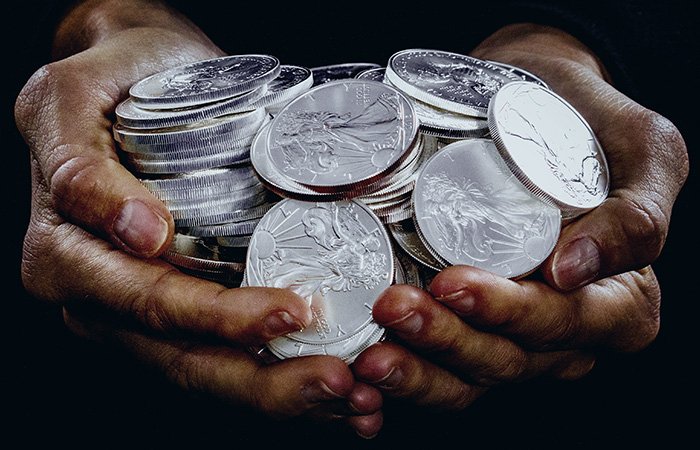
Today, silver is still a crucially important commodity for both industrial and investment purposes. Yet many investors want to better understand what makes silver a useful asset.
Before tracing the history of this phenomenon, let’s examine some of the main arguments for what makes silver so valuable:
- Relative scarcity in the earth’s crust
- Array of industrial applications
- Universal appeal across time and geographic space
After decades in the precious metals industry, and after countless hours of research, we have gained an intimate understanding of why silver remains valuable. These reasons will be discussed in greater detail below.
1. Silver Has Been Valued Throughout History
Like any topic buried beneath the sands of time, the origin of gold and silver's use as money elicits some disagreement between historians—as well as among anthropologists, archaeologists, and academia writ large.

Henry I Silver Penny
Competing scholars offer minor differences in their work on this subject while presenting the same general narrative. Across the ancient world, settling commerce and trade in precious metals proved a more efficient system than simple barter.
Some historians differ on where this practice started, and whether it was spread around the inhabited world or arose independently in more than one civilization, such as silver being used for trade in India prior to contact with Greece.
At any rate, by the time of recorded history during antiquity, virtually all of the tribes or cultures of Central Asia were using ingots of gold and silver in order to conduct business.
There are a number of factors that made precious metals ideal for use as money. While it could merely be a happy accident that these elements were put to the same use by different societies long ago in humanity's past, perhaps we will find that the ancients knew more than we assume.
2. Precious Metals Have Special Chemical & Physical Properties
The speculation that perhaps ancient peoples made a conscious decision to choose gold and silver as money (rather than this being a chance historical circumstance) is rooted in lessons from modern science and industry.
It turns out, after literally thousands of years of discovery (and plenty of trial-and-error thrown in), that gold and silver are not simply shiny metals. True, their distinctive colors and luster are not trivial, but there’s a reason we have always distinguished these metals as “precious.”
The label is far from arbitrary: Silver and gold really do possess special properties that make them exceptionally useful to human beings.
3. Silver Is Also an Industrial Metal

Solar Panel Installation
Approximately half of the silver that is mined each year gets used in industrial processes. This is unlike gold, which does have important industrial applications but is only used in small amounts. Less than 10% of newly-mined gold is consumed by industry annually.
The uses for silver are wide-ranging and span across much of the technology sector. Your smartphone screen works because of silver, for instance. Medical equipment is often coated in silver. The photovoltaic cells of solar panels contain silver.
Many traditional industries also rely on silver. It coats mirrors, helping give them their reflective surface. Silver has long been a key component in photography. Aside from its presence in many electronics, silver is also used in certain long-life batteries.
These are only a handful of examples, but they all relate to the chemistry and physics behind precious metals.
Chemical Properties of Silver
Silver’s chemical symbol on the Periodic Table of Elements is Ag. This comes from argentum, the Latin word for silver. You’ll still sometimes hear it referred to as the “argent metal.”
While it is largely non-reactive to other substances, silver can nonetheless serve as an excellent catalyst in certain chemical reactions.

Molten Silver
High malleability allows silver to take all sorts of different shapes fairly easily, which is obviously important in the manufacture of jewelry and other items such as cutlery. Think about it: We tend to call all eating utensils “silverware,” referencing this historical application.
Silver is also rather ductile, meaning it can be formed into thin wires. Moreover, it’s the most efficient metal known for conducting electricity and is one of the best conductors of heat, as well.
Physical Properties of Silver
The most obvious physical property of silver that comes to mind is its color. It is sometimes bunched together with platinum and palladium as “white metals” due to their similar appearance. Nonetheless, the lustrous hue of silver is unmistakable and recognized all over the world.
It is a fairly dense metal, but less so than its cousins palladium, gold, and platinum (in order of density). Aside from being malleable, silver has a middle-of-the-pack melting point compared to other elements, reaching a liquid state at 962 degrees Celsius (roughly 1,764 degrees Fahrenheit).
Taken together, these characteristics have made silver an important metal beyond industrial uses.
4. Silver Has Unique Monetary Properties
The prime example is how silver (along with gold) have naturally lent themselves to being used as money.
Silver is among the only elements that has been known by humankind since antiquity. As stated earlier, it’s unlikely to be a coincidence that ancient peoples started employing silver as a form of currency. It just so happens that many of the chemical and physical features of silver make it an ideal choice for money.
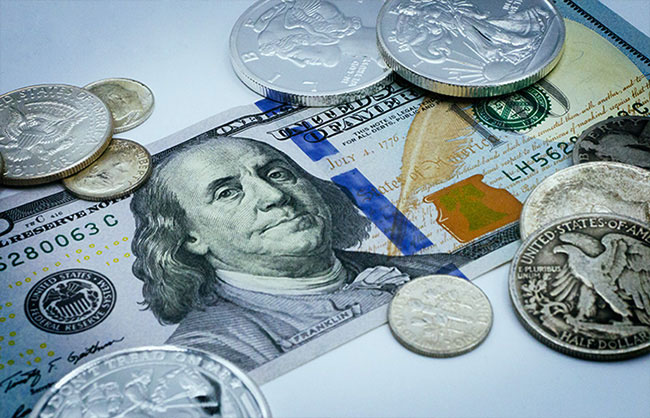
Silver and Money
Here are some of the fundamental monetary qualities of silver.
Divisibility: Silver can be divided into small units of equivalent composition, unlike many barter items. This also relates to its fungibility.
Durability: Silver resists corrosion and remains durable, increasing how long it can stay in circulation. It is non-perishable.
Portability: Related to the first two qualities, silver can easily be transported across long distances without degrading.
Cognizability: This essentially means silver is readily recognized as having value, which allows it to be a good medium of exchange no matter the location.
Store of Value: Over thousands of years, silver has a reliable track record of maintaining its purchasing power relative to other goods, services, and commodities.
Given these qualities, it shouldn’t be surprising that in at least a dozen languages, the word for “money” is synonymous with, or is derived directly from, the word for “silver.”
5. Silver Is Associated With Wealth

Silver Chalice
The result of silver possessing these characteristics has been its clear connection to wealth. In most societies, the elite have tended to use silver for ceremonial items that are usually made from less expensive metals.
This affinity can be traced back to the oldest records of human history. In the early period of Ancient Egypt, silver was relatively more scarce in the area than gold and thus was more valuable. The Egyptians believed it to be a godly substance: the bones of divinities were supposedly made of silver.
The tangible nature of silver (as opposed to “paper assets”) and its brilliant luster are also considered markers of wealth. Many high-net-worth individuals and members of royalty have over the centuries preferred silver—something real and physical—over more abstract financial vehicles.
6. Silver Was Crucial for International Trade
In fact, merchants and traders around the world were very attached to silver coins for this same reason. For centuries, silver was one of the only trusted forms of money when conducting commerce.
Across the Middle East and North Africa, for instance, silver coins were the primary medium for trade well into the 19th century. Arab merchants were especially fond of the Maria Theresa thaler, a silver trade coin issued by the Habsburg Empire centered in Austria-Hungary. (Thaler is a cognate for “dollar” in German.)
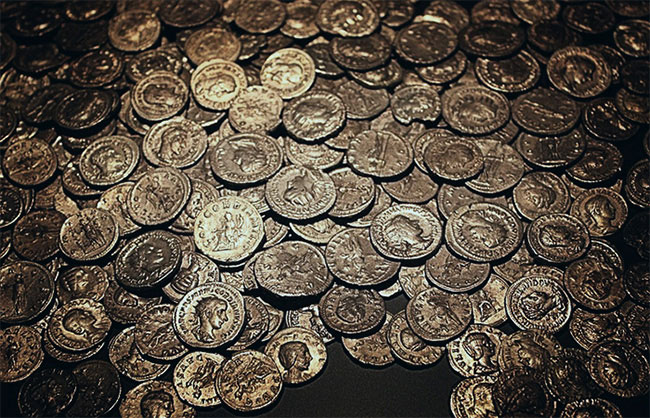
Ancient Silver Coins
Accordingly, several countries in the West issued their own silver trade dollars for use in the East. Large silver coins were exported to China during the 1800s and into the early 20th century. Even in North America, the Spanish silver dollar (or eight reales) was used extensively to conduct business, and was recognized as U.S. legal tender until after the Civil War.
Many examples of silver’s erstwhile role in global trade abound. The reliance upon sterling silver (92.5% pure silver) during the supremacy of the British Empire event lent its name to Britain’s currency, the pound sterling.
The British promised to pay for the services of its colonial subjects in India with silver during World War I. Indeed, it sourced some 270 million silver dollars from the United States to do so because silver (or gold, which was in short supply) was the only form accepted by the Indians.
These are just a few illustrations of how, until relatively recently, silver’s cognizability made it the perfect choice for overseas trade and settling international debts.
Supply & Demand Dynamics of Silver
Over the past half-century, silver coins have all but disappeared as money. The U.S. stopped production of 90% silver coins for regular circulation in 1965 and virtually the entire world followed suit.
Today, silver is traded in the same manner as all other commodities. Its price is by and large determined by supply and demand. Its demand profile is made up by jewelry, industrial applications, and investment purposes in roughly equal proportions.
On the investment side, silver bars are now being joined by bullion coins issued by various government mints for the express purpose of investment and trade.

Source: mineral-analysis.es
Silver Mining
In excess of 30,000 metric tons of silver are mined on an annual basis.
Somewhat surprisingly, only a small portion of this comes from primary silver mines. Instead, the majority of freshly mined silver actually comes as a secondary byproduct of other mining operations, such as copper mines, gold mines, and zinc mines where silver naturally occurs in the same ore as these other metals.
As a result, there has been quite a bit of consolidation in the silver mining sector—meaning many companies have merged in order to gain greater efficiencies. This can also help reduce the all-in sustaining cost (AISC) of each mine, which is the overhead cost of operation per ounce of silver mined.
A related development is the emergence of silver streaming, where a company agrees to sell its mining output to another distributor at a locked-in price.
7. It Is an Alternative Safe Haven
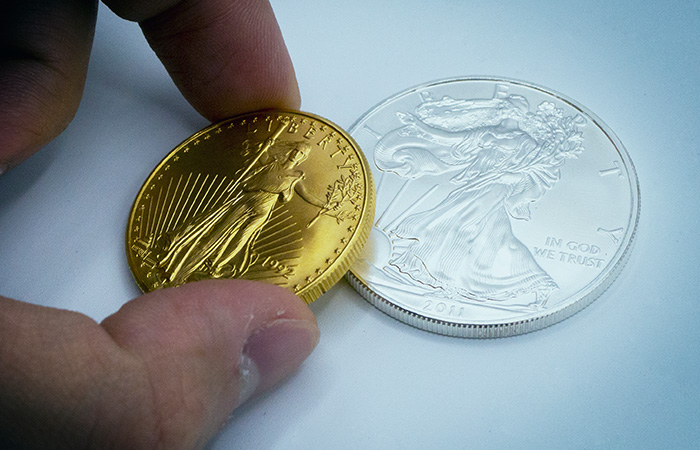
Gold and Silver Eagle Comparison
Several different asset classes are considered traditional “safe havens,” meaning they tend to have stable prices during times of market stress. The most common of these safe havens are government bonds (especially U.S. Treasurys), gold, and certain reserve currencies (like the dollar and the Japanese yen).
Safe-haven assets help provide diversity to an investment portfolio. This means the overall level of risk is lowered by having a mix of assets whose individual performances are not closely correlated to one another. It's one of the characteristics that gold and silver share, and helps make the case for their attractiveness as investments.
For someone who already owns gold, silver coins, such as the American Silver Eagle, can provide even greater diversification, balance, and stability.
The price of silver has a very low entry point compared to the other precious metals. It can therefore appeal to any investor, regardless of how modest their budget. Moreover, having an allocation of both gold and silver means you won’t miss out if one of the metals outperforms the other.
8. Silver Provides Stability Like Gold
Frankly, the pressing need for safe-haven investments is on the rise.
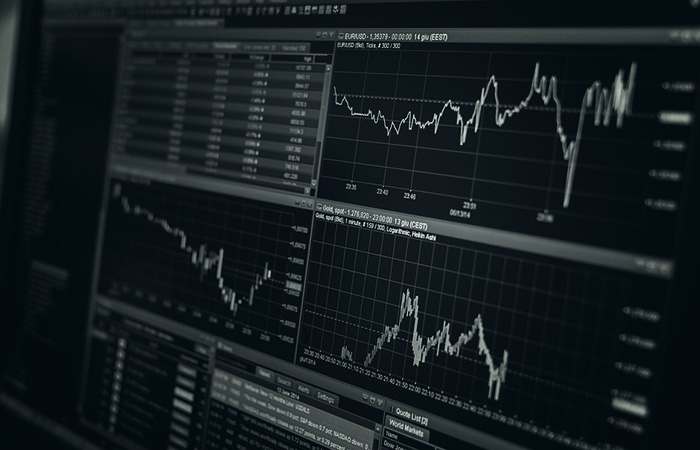
There are a number of reasons for this. The world economy entering a period of transition as nearly a decade-long bull market comes to a close. Not only is this cycle nearing its end, causing some investors to take on greater risk in pursuit of dwindling returns, but what lies ahead is truly uncharted territory.
Unprecedented measures were taken by policymakers following the financial crisis in 2008. Massive amounts of economic stimulus helped markets recover, but the unwinding from these extreme policies presents new challenges that are by their very nature difficult to predict.
This set of conditions makes it even more important for investors to protect themselves with an effective hedge.
Assessing the Value of Silver
Both the long-term historical perspective and the vagaries of current market conditions support the case for silver’s importance as an investment.
Silver has, without a doubt, tended to appreciate in price over time and thereby preserve its value against inflation. Many in the financial industry refer to it as an “inflation hedge” for this reason.
Understanding Inflation

Why is that important? Because the world’s currencies behave in exactly the opposite fashion. The very definition of inflation—rising prices for goods and services—entails a relative loss of value for a currency. The process is exacerbated by the increase over time of the money supply: As more currency enters the economy, each unit of that currency tends to buy less than before.
Perhaps the simplest demonstration of this is a stamp. For a rather long time, a stamp in the U.S. cost 3¢. A single dollar could buy you 33 stamps (with a penny to spare). Over time, stamp prices have steadily risen despite the fact that nothing about the stamps themselves has really changed.
How much does a typical stamp cost now? The answer is more than 50¢. One dollar won’t even buy you two of them. Seen through the lens of inflation, you can reckon that the purchasing power of the money has fallen rather than thinking the “value” of a stamp has increased.
This isn’t something unique to the USD. The ravages of inflation apply to fiat currencies in general. As the famous French luminary Voltaire observed, “Paper money eventually returns to its intrinsic value—zero.”
9. Silver Is for Long-Term Wealth Preservation
With all of the above in mind, the value of silver is all about preserving purchasing power. Its appeal is over the long run, more akin to a form of savings than a speculative endeavor.
Another benefit is silver’s high liquidity. Liquidity is a measure of how quickly and easily something can be sold without dramatically impacting its price. This is particularly useful in the event of a “rainy day” or an emergency, helping to keep you solvent even in the event of a major market downturn or unexpected disruption to your life.
Predicting the future is impossible, of course, but silver is a low-risk option for any investor.

Everett Millman
Everett has been the head content writer and market analyst at Gainesville Coins since 2013. He has a background in History and is deeply interested in how gold and silver have historically fit into the financial system.
In addition to blogging, Everett's work has been featured in Reuters, CNN Business, Bloomberg Radio, TD Ameritrade Network, CoinWeek, and has been referenced by the Washington Post.
